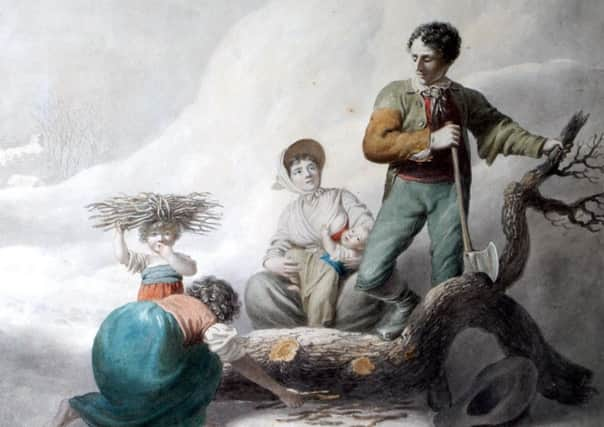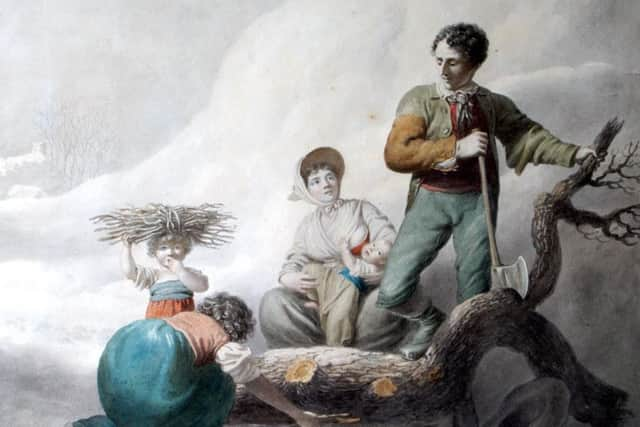Nostalgia: Benefits Street Regency style


In 1814, 200 years earlier at the height of the war with Napoleon, the nation was similarly gripped by sight of pictures featuring the poor and dispossessed.
Today the poor are shown on flat screens, tablets and computers. Back then it was oil paintings, prints and fully illustrated books.
Advertisement
Hide AdAdvertisement
Hide AdSo popular were they that the metal plates wore thin through so much use.


Today such paintings by Morland, Barker and Ward are seen as old fashioned, clichéd and out of date, yet as the powerful new art exhibition, Portraying the Poor and Industrious in the Age of Waterloo, at Horsham District Council’s Horsham Museum & Art Gallery shows, we are not so distant from the age of Jane Austen in our fascination with the poor.
The unusual art exhibition, which has been supported by Toovey’s Auction and Fine Art Valuers, displays the art within its historical context, re-awakening an understanding of what the images portray.
Many of George Morland’s prints have become the backdrop to a slap-up meal in today’s rustic pub, as the images have been adorning walls and place mats.
Advertisement
Hide AdAdvertisement
Hide AdThis has neutered the impact of what they actually portray: the harsh reality of life when the nation had been at war for 20 years and starvation stalked the land. In 200 years’ time would we imagine place mats with images of Benefits Street on them?
Artists responded to the growing insatiable demand for poor people, some of whose work will be on display in this exhibition.
One such artist is Thomas Baker who used cutting edge technology of lithography to portray the poor of Bath.
His 40 drawings of the destitute, worn down and starving children and adults were published in 1813, selling to the very wealthy.
Advertisement
Hide AdAdvertisement
Hide AdAnother artist’s work on show is William Marshall Craig, whose striking watercolour of wood gatherers in the snow shows the response to Regency ‘fuel poverty’, possibly collecting wood from the unenclosed commons.
George Morland had ready access to the very poor and those on the margins of society due to his own dissolute life.
William Henry Pyne captured the life of the poor and the industrious in his celebrated book Microcosm, which is on display, to allow the rising number of amateur artists to populate their pictures.
The exhibition also shows other aspects of the poor: how they were used in four remarkable prints issued in 1799 to show a united nation, 215 years earlier than our conversations of what a United Kingdom means.
Advertisement
Hide AdAdvertisement
Hide AdOr how phrases such as “hard working families” and the “working poor” were portrayed, when the street sellers of London were painted and then turned into one of the most successful range of prints ever published, The Cries of London.
The exhibition will have a small annex which will show the flip side of the tale, the side that is reflected in the very wealthy and the sense of ‘bling’, just as the media today fixates on luxury food, cars and art.
Portraying the Poor and Industrious in the Age of Waterloo at Horsham Museum & Art Gallery shows that our fascination with the poor is nothing new.
While not contemporary, it is art that is current and reveals that in a time when the Duke of Norfolk bought the town of Horsham for £93,000 artists were portraying the poor and the aspiring classes hanging the prints on their walls for polite society to converse about.
Advertisement
Hide AdAdvertisement
Hide AdA 200 year old version of the water cooler moment the day after the programme was aired.
The exhibition opens on September 19 and runs till November 28.
For more information contact Jeremy Knight, Museum & Heritage Manager.